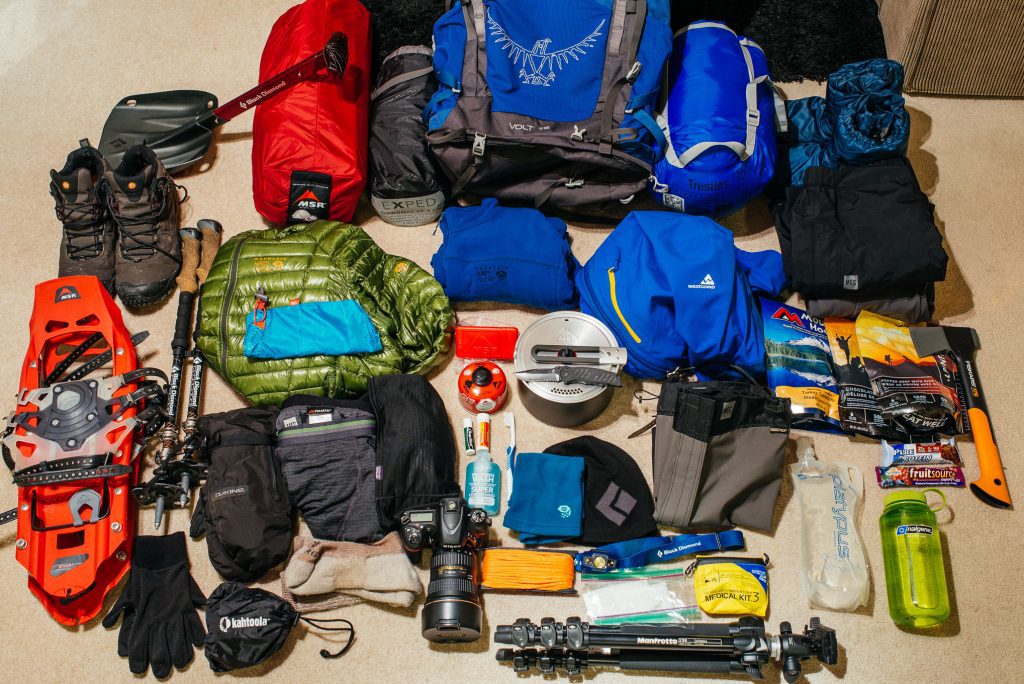DISCOVER RWANDA
Mountaineering in Rwanda
Rwanda is home to the largest part of the Virunga Massif which encompasses 8 spectacular volcanoes, 5 of which are located in Rwanda, namely: Mount Bisoke, Mount Karisimbi, Mount Sabyinyo, Mount Muhavura, and Mount Gahinga.
Mountaineering in Rwanda offers the most rewarding mountain climbing and hiking experiences for travelers looking for adventure. Rwanda, located south of the Equator in East Africa is one of the most visited safari destinations for gorilla safaris; but the country offers more than that. The “Land of a Thousand Hills” is a site for the best mountaineering tours for each level of experience.
Mountaineering in Rwanda is often done in the Virunga Volcanoes and is sometimes known as Volcano Hiking. Rwanda is home to the largest part of the Virunga Massif which encompasses 8 spectacular volcanoes, 5 of which are located in Rwanda, namely: Mount Bisoke, Mount Karisimbi, Mount Sabyinyo, Mount Muhavura, and Mount Gahinga. Nonetheless, mountaineering trips are popular on 4 of these volcanoes, besides Mount Sabyinyo given its sharp edges and massive craters. But this volcano can be climbed from the Ugandan side.
Moreover, these 5 volcanoes all stretch into the Volcanoes National Park, Rwanda’s most popular national park, well known for its gorilla trekking adventures, as well as hiking excursions in Rwanda. The Virungas are a nature enthusiast’s paradise, with rich dense forests, diverse plant zones, spectacular landscapes, gorgeous crater lakes, spectacular landscapes, and distinctive montane life. The mountains boast a plethora of wildlife such as mountain gorillas, golden monkeys and other primate species, forest elephants, and buffaloes, and an array of endemic birds; much of this incredible wildlife is indigenous to the Virungas or the Albertine rift valley in which the mountains are located. Here are some of Rwanda’s ideal mountaineering destinations;
Mount Bisoke
Standing at 3,711m (12,175 ft) above sea level, Mount Bisoke is an active volcano that straddles the border of Rwanda and the Democratic Republic of Congo; however, its summit lies in Rwanda. The volcano lies 35 kilometers northeast of Goma town and is adjacent to the popular Lake Kivu. Though active, Mount Bisoke is said to have last erupted in 1957: the volcano one crater lake at the summit and the other halfway (Lake Ngezi).
Mountaineering in Rwanda’s Mount Bisoke are interesting and adventurous experiences that are not limited to experienced hikers; nonetheless, high fitness is required to appreciate the hike. The climb up to the peak takes 6 hours, with 4 hours to ascend and 2 or more hours to descend, based on how often the hiking party pauses for rest. Mountaineers with prior experience on the other hand can reach the top in 3 hours.
Mountaineering trips up Mount Bisoke are done via two trials which include the Mount Bisoke Crater Lake trail and the Lake Ngezi trail. The Mount Bisoke Crater Lake trail is the most renowned hiking path in Volcanoes National Park, and it takes hikers up to the peak’s magnificent crater lake. More so, Mountain Bisoke is closer to the core of the Virungas, providing excellent views of the entire massif. Moreover, you can see the steep top of Mount Mikeno in the Congo, During the hike, hikers have a decent chance of spotting mountain gorillas and golden monkeys, in addition to other creatures.
The Lake Ngezi trail, on the other hand, is a shorter climb up Mont Bisoke and it is ideal for those who do not wish to summit. Lake Ngezi is a lovely crater lake on the slope of Mt. Bisoke, near Mount Gahinga. The round-trip hike takes 4 to 5 hours, depending on your physical level.
Mount Karisimbi
Mount Karisimbi is the highest of the Virunga Volcanoes, elevated at 4,507m (14,787 ft) above sea level. The dormant volcano lies within Volcanoes National Park, near the border with the Democratic Republic of the Congo. Because of its proximity to the equator, the mountain accumulates snow during the dry months of the year. Mount Karisimbi derives its name from the term Karisimbi, which means ‘white shell’ in the indigenous Kinyarwanda language. This mountain boasts two craters, the greatest of which is the Mutango crater, in addition to a two-kilometer-wide Branca Caldera.
Experienced hikers who prefer a longer and more difficult journey in the Virungas ought to try Mount Karisimbi because, unlike the other volcano treks, this volcano hike is a two-day excursion that includes one night of camping on the summit at an elevation of 3,700 meters. Visitors to Rwanda’s Volcanoes National Park frequently combine Gorilla trekking with a hike up the mountain. It may be a challenging but rewarding experience: hikers can expect to see a variety of birds, golden monkeys, and even mountain gorillas. More so, one may also explore the grave of Dian Fossey, a prominent primatologist who conducted considerable research on mountain gorillas.
Trekking Mount Karisimbi is best climbed during the dry months of December to March and June to early October since this is the finest time to explore the Virungas’ deep foggy forests. Mountaineering tours on Mount Karisimbi can be arranged through a local tour operator, who would be then responsible for obtaining permits and organizing accommodation, meals, and extra mountaineering equipment. During hiking, porters are available to help carry your heavy equipment at roughly $20 per hour on your mountaineering in Rwanda safari.
Mount Gahinga
Situated within the borders of Rwanda and Uganda, Mount Gahinga is the shortest of the Virunga Volcanoes, elevated at 3,474 meters above sea level. Seated between Mount Muhabura and Sabyinyo, Gahinga is the smallest of the three: the volcano is named after a Kinyarwanda phrase also known as “a small pile of stones.” In Uganda, the volcano is found in Mgahinga Gorilla National Park; it further inspired the name of the national park. The volcano features a marshy caldera estimated to be 180 m (591 ft) wide on its crest.
Mount Gahinga is a gentler hike than Mount Sabyinyo or Muhabura; nonetheless, one must be physically and emotionally prepared to conquer the volcano. Mount Gahinga offers thrilling day hikes and depending on the hiker’s determination and fitness, the hiking tour takes 6 hours to accomplish. Hiking escapades to Mount Gahinga begin at 7:00 a.m. with a briefing from one of the park Rangers at the park headquarters. Here hikers are taken through the mountain’s history and location amid the Virunga volcanoes, in addition to what they need should prepare for during the hike. And after the briefing, the hike up the gorgeous mountain begins.
From the lower slopes, appreciate the thick bamboo forest cover with impressive sights of monkeys, baboons, buffaloes, etc. As you ascend higher, you will come across several bat-filled volcanic caves, and finally, at the summit, take in the most breathtaking views in the massif: plenty of vistas to enjoy including the large crater wetland, the Virunga ranges, and the far-reaching views of the Rwenzori Mountain Ranges.
To go mountaineering in Rwanda’s Mount Gahinga, one requires a hiking permit from the park authorities. The permits are $75 and may be purchased on the day of the hike.
Mount Muhabura
Situated in both Volcanoes National Park and Mgahinga Gorilla National Park, Mount Muhabura is the third-highest volcano in the Virunga Massif with an elevation of 4,127 meters. The volcano is a dormant one and features a small but beautiful crater lake at its summit. Mount Muhabura is also known as Mount Muhavura and in Kinyarwanda, the name “Muhabura,” means the guide. Mount Muhabura can be hiked both from Uganda and Rwanda. However, Mount Muhabura is the hardest mountain to climb in the Virunga Massif. It is not the tallest, but it is exceedingly steep, and the hike must be completed in one day. The volcano features a cone-like form and is covered in volcanic ash and other associated materials on the slopes, as well as at the base. The volcanic ash provides support for the bushes and thickets that grow on the mountain faces.
The Mount Muhavura climb is a 6 to 8-hour tour that provides spectacular views of the rugged terrain. Looking down, one may view the twin lakes Burera and Ruhondo. A lovely crater lake may also be found near the crest of Mt. Muhavura. Because it is relatively high, mountaineering on Mount Muhabura necessitates strong fitness and endurance.
Hiking Mount Muhabura from the Rwandan side requires you to pay for your permit at the Kinigi Visitors Center. After paying at the office, your group will be allocated a Guide and Rangers who will guide you up the mountain. But first, the Rangers will take the hikers through before departing for the hike. This briefing covers all information about the hike and mountain including history and facts. Mountaineering Mount Muhabura begins at about 7 a.m. and takes between 8 and 7 hours. Porters are available for rent at the mountain’s base if you are hauling large luggage or equipment.

When is the Best Time to Go Mountaineering in Rwanda?
Mountaineering in Rwanda is an exhilarating safari experience that can be enjoyed at any time of the year, be it the wet or dry seasons. However, the dry seasons, which last from June to September and December to February, have less rainfall and more sunlight. This is the ideal time to visit since the hiking paths are dry and ascending is consequently easy. The wet months (March to May, and October and November) feature regular rains with heavy downpours, making the routes exceedingly muddy and the hike arduous.
However, the landscape is the finest during the wet season, which might also be the ideal time to mountaineer if you are up for the effort of a challenging mountaineering in Rwanda tour.
Packing List for a Mountaineering Safari in Rwanda
- Good hiking boots for the rough mountainous terrain in the Virunga Massif
- Warm clothing including long trousers, long-sleeved shirts, a rain jacket, warm stockings
- A pair of hand gloves
- A walking stick (often provided at the park headquarters)
- Insect repellent and sunscreen
- Snacks and drinking water
- A good camera to capture the best photos for memories
- A pair of binoculars to help you have clearer and more far-reaching views.
- Camping Equipment including a tent, sleeping bag, sleeping mat, etc., for mountaineering destinations like Mount Karisimbi.







